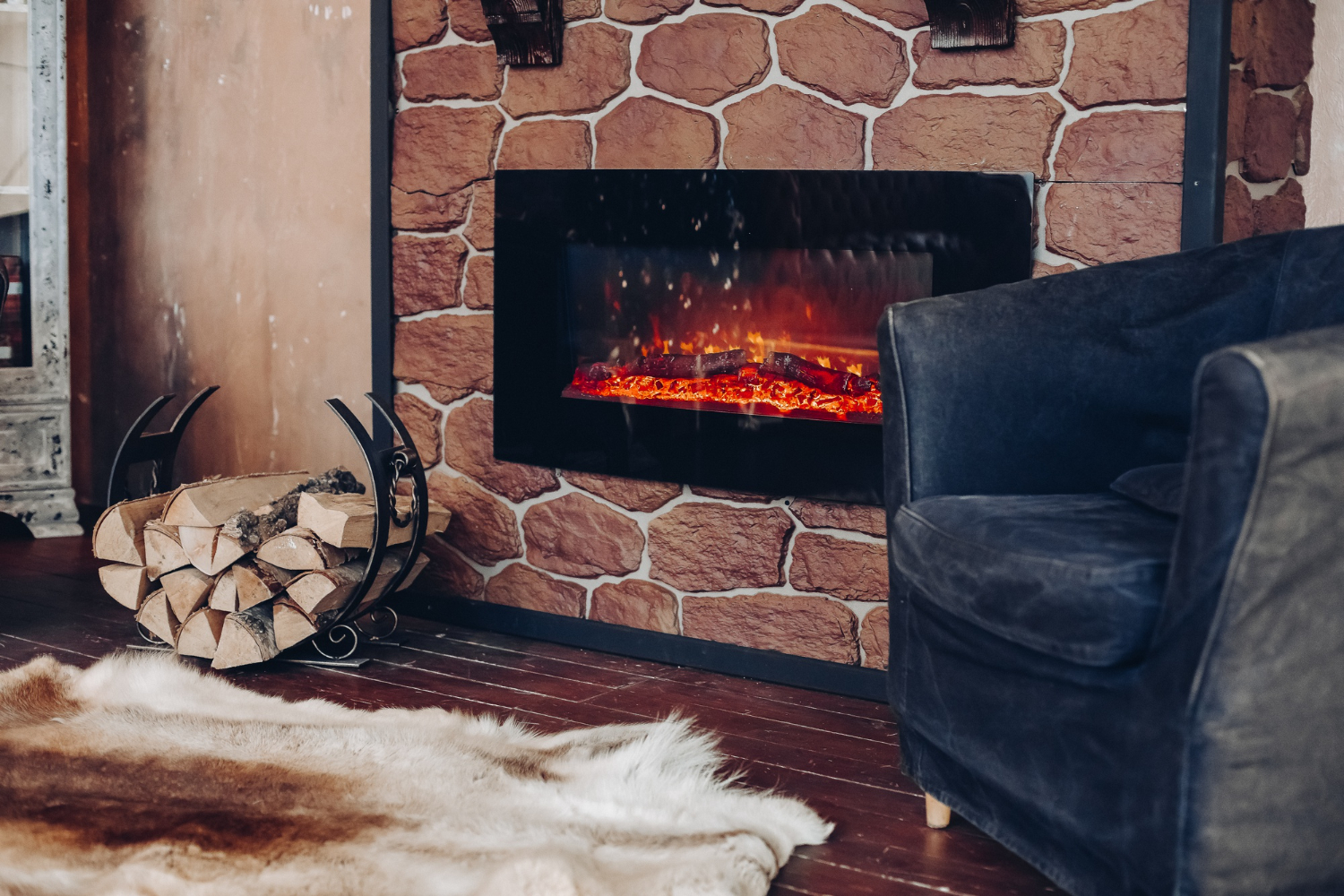
Introduction
A slow combustion fireplace is a perfect addition to every home seeking warmth and comfort, especially during the winter season. Not only does it supplement your home’s central heating system, but it also serves as a focal point in your living space—adding a touch of classic elegance. However, to maintain its beauty and ensure its efficiency, regular care and maintenance are necessary.
In this comprehensive guide, we will take you through the ins-and-outs of maintaining a slow combustion fireplace. We will discuss the importance and benefits of regular maintenance and provide a step-by-step guide on caring for your fireplace. By the end of this article, you will be equipped with thorough knowledge and practical tips to ensure the longevity and optimal performance of your slow combustion fireplace.
Understanding Your Slow Combustion Fireplace
Before diving into the maintenance process, it’s imperative to understand the fundamentals of your slow combustion fireplace. Generally, it comprises several key components each playing a significant role in its operation. These include the firebox, where the combustion process happens; the air vent, which controls airflow, thus, regulating the burning intensity; and the flue system, which takes away the smoke and poisonous gases released during combustion.
Each part is vital to the overall performance and safety of the fireplace. For instance, a damaged firebox can compromise the safety of your home by permitting fire to leak out or transfer heat to the neighboring structures, potentially causing a fire. Therefore, understanding your slow combustion fireplace’s anatomy is essential in implementing a highly effective maintenance routine

slow combustion fireplace
The Importance of Regular Fireplace Maintenance
You might wonder why regular fireplace maintenance is essential. First, it extends the lifespan of your fireplace. Through maintenance, you are able to detect and repair minor damages before they escalate, thus, proactively preventing significant problems down the line. Second, it improves the efficiency of your fireplace. A well-maintained fireplace burns fuel more efficiently, providing more warmth while consuming less fuel. Lastly, regular maintenance prevents safety hazards. Bear in mind that a neglected fireplace can lead to chimney fires or carbon monoxide leakage, posing a risk to your family’s health and safety.
Ignoring the importance of regular fireplace maintenance could result in costly repairs or complete replacement of your fireplace. Most importantly, it can potentially compromise your household’s safety. Therefore, knowing how to maintain and clean your slow combustion fireplace is a crucial skill every homeowner should have
Getting Started: Essential Tools and Safety Measures
Equipped with practical knowledge about your slow combustion fireplace’s basic mechanisms and the understanding of the importance of its regular maintenance, you’re now ready to get your hands dirty – quite literally. The right tools are going to be your best friends in this procedure. Fire-resistant gloves, a chimney brush, ladder, goggles, dust mask, and waste bucket are some essential tools you’ll need. Alongside these, you would require a wire brush, flashlight, and fireplace glass cleaner.
Safety should always be your first priority when dealing with fire-related appliances. Before initiating the maintenance process, make sure your fireplace is cool to avoid burns. Also, always use the right tools and protective gear to prevent injuries. A dust mask and goggles are especially important to prevent inhaling soot or getting it into your eyes.
Step-By-Step Guide to Maintaining Your Slow Combustion Fireplace
After gathering the necessary tools and safety equipment, it’s time to follow our detailed step-by-step guide to maintaining your slow combustion fireplace. Begin by inspecting the various components for any physical damages such as cracks or severe corrosion. A detailed check of the firebricks, door gasket, grates, and the damper system must be done.
Next, clean the interior parts of the fireplace. Remove the ashes and thoroughly scrub inside using a wire brush. Make sure to clean the grates, firebox, and damper. Afterward, assess the external parts, including the surrounding area, door, and handles.
Now, consider the chimney cleaning. This process, especially when it includes climbing to the roof, can be a bit complex and dangerous, hence, professional help might often be necessary. However, if you decide to do it yourself, use a chimney brush to clean it from top to bottom. Always remember to start from the top and work your way down to prevent the dispersion of soot and ash in your home.
Lastly, lubricate the moving parts such as the air control mechanism. Regular lubricating ensures smooth operation and longevity of these parts. A high-temperature lubricant should suffice for this task.
Cleaning Your Slow Combustion Fireplace: A Practical Approach
Now, let’s delve deeper into cleaning your slow combustion fireplace. While it might seem like a daunting task, with the right tools and approach, it becomes manageable. Start by removing ashes and debris from the firebox using a metal scoop or shovel. Don’t forget to wear a dust mask to prevent inhalation of ash and soot.
Once the debris has been removed, get a wire brush to scrub the internal part of the fireplace, focusing on areas with visible soot. Then, use a vacuum to clean up the loosen soot and ash. Remember to carefully and thoroughly clean the glass door with a specialized glass cleaner to maintain its transparency.
Regular cleaning not only makes your slow combustion fireplace aesthetically pleasing but also increases its efficiency and safety. An excess build-up of soot and creosote can restrict the flow of smoke out of the chimney, leading to smoke leaks. Additionally, creosote is a highly flammable substance that can cause chimney fires if allowed to accumulate.
Tips and Tricks for Easy Fireplace Maintenance and Cleaning
Proper maintenance of a slow combustion fireplace might seem like a complex task, but by following some expert tips and tricks, you can make the process easier and more effective. First, always ensure that the fireplace has cooled down completely before beginning any cleaning or maintenance task. This not only keeps you safe but also facilitates easier removal of soot and ash. Using a wire brush with stiff bristles instead of a regular broom can help in effectively removing stubborn soot and creosote build-up.
Ensure to wear proper protective gear, including goggles, gloves, and a dust mask while cleaning, to protect yourself from ash, soot, and other debris. Lastly, remember to clean your fireplace regularly, depending on your usage. Typically, a thorough cleaning is due after every cord of wood burned.
Some common pitfalls to avoid include neglecting regular cleaning and maintenance, using inappropriate cleaning tools, not wearing protective gear during the cleaning process, and rushing through the maintenance procedure. It’s crucial to note that health and safety should never be compromised in the maintenance of your slow combustion fireplace.
When to Seek Professional Help
As competent as you might be in maintaining your slow combustion fireplace, there are situations that indicate the need for a professional’s intervention. For instance, if you identify significant cracks in the firebox or any component of the fireplace, it’s time to call an expert. Similarly, if after cleaning, you still notice an excess accumulation of soot or creosote, or observe smoke entering your living space, it’s a sign you need professional help.
When choosing a professional service provider, there are certain factors you should consider. Check the credentials, ensuring they are qualified and certified for fireplace maintenance. References from previous clients can also be a good pointer to their expertise and reliability.
Conclusion
Maintaining a slow combustion fireplace might appear challenging, but with the right knowledge, tools, and approach, it’s a practical and manageable task. Regular maintenance doesn’t only promote the general aesthetic appeal of your fireplace, but it also enhances its efficiency and prolongs its lifespan. More importantly, it keeps your fireplace safe, preventing potential hazards like chimney fires and carbon monoxide leaks in your home.
By following our comprehensive guide, you will ensure the long-term performance and safety of your slow combustion fireplace. Always remember, when maintenance tasks go beyond your skills, never hesitate to call on the professionals.
Call to Action
If you’ve found our fireplace maintenance guide useful, we’d love to hear from you! Share your experiences or ask further questions in the comment section below. Community learning is always enriching, and your input could help another homeowner. For more practical guides and tips, feel free to explore our other blog posts on home maintenance. Enjoy your warm and cozy fireside chat!
